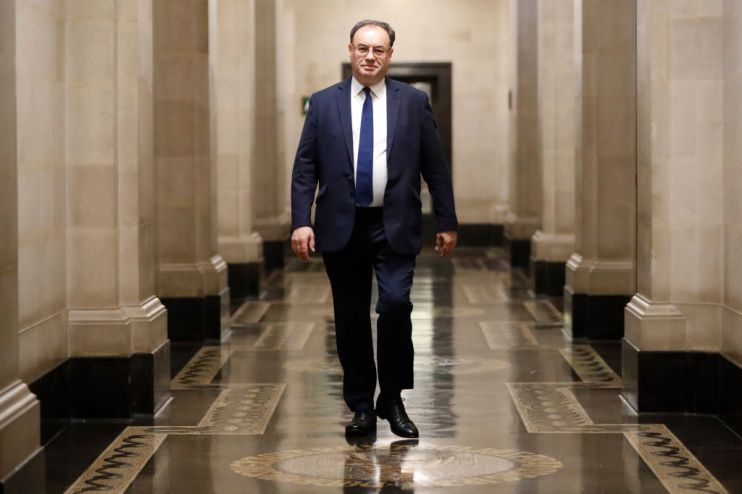Bank of England to tighten monetary policy to tame runaway inflation

The Bank of England signalled today it is likely to start reining in the wave of monetary stimulus it unleashed in response to the Covid crisis to control inflation.
“At some point, monetary policy may need to tighten so that the MPC can meet its remit” of achieving an inflation target of two per cent, the Bank said in remarks published in its latest monetary policy report.
Fresh forecasts provided alongside the latest round of announcements from the Bank’s monetary policy committee show the Old Lady expects price rises to hit four per cent later this year.
The Bank does not expect inflation to return to target until the second half of 2023, governor Andrew Bailey told a press conference. He also said the MPC will not “hesitate to act” should inflation spiral out of control.
The Bank said it could reach its inflation target by increasing rates or “by a reduction in the stock of purchased assets, or some combination of the two.”
Read more: Bailey attempts to quash inflation fears
Thomas Pugh, UK economist at RSM, said: “The MPC gave its clearest signal yet that its focus is moving away from supporting the economy through the pandemic and towards tightening policy.”
UK inflation is primarily being driven by supply chains buckling under the weight of a resurgence in global demand as economies emerge from Covid restrictions. Firms are battling with each other to secure key inputs amid widespread scarcity of workers, raw materials and commodities, which is putting upward pressure on prices.
The monetary policy committee also published minutes from their latest round of meetings on Thursday.
Although members voted unanimously in favour of holding rates at 0.1 per cent, tremors of discontent toward the current bond buying programme emerged among officials at Threadneedle Street as one key member, Michael Saunders, voted against the plan.
Martin Beck, senior economic adviser to the EY Item Club, said: “Most MPC members remain content with the view that higher inflation will be a temporary issue. However, there were some inklings that a tightening of monetary policy may have moved closer.”
Read more: Bank of England’s MPC meeting: Who will take Haldane’s hawkish reins?
The committee voted 7-1 in favour of leaving government and corporate debt purchases this year unchanged to bring the Bank’s total stock of debt to £895bn by the end of the year.
The Bank said it will start to wind down bond purchases by not reinvesting the proceeds from its holdings once its main policy rate hits 0.5 per cent. It will start selling its holdings, known as quantitative tightening, once Bank rate reaches one per cent and only if economic conditions are favourable.
Yael Selfin, chief economist at KPMG UK, said: “The significantly revised sequencing guidance from the Bank could see a more gradual increase in rates over this cycle, as a reduction in its government bond holding is brought forwards.”
The meeting was the first since ex-chief economist Andy Haldane, who was the only member of the MPC to vote against pushing ahead with the bond buying programme in its current format at the last meeting, left the Bank in June after three decades of service.
Read more: Sunday Read: Bank of England’s QE programme has muddied the water between right and wrong
Haldane had previously urged the Bank to taper its asset purchases amid a stronger than expected economic rebound from the Covid crisis. He has also predicted – before today’s new official forecasts – that inflation will reach at least four per cent by the end of the year.
According to latest data from the Office for National Statistics, inflation is currently running at 2.5 per cent annually, higher than the Bank’s two per cent target.
Speaking at a press conference, Andrew Bailey came down hard on a recent report published by a House Lords committee claiming the Bank is “addicted” to quantitative easing, saying he thought it was an extremely poor choice of language. He also said QE has worked effectively at bringing down borrowing costs for all borrowers in the economy.
The MPC kept its forecasts for the UK economy unchanged, expecting output to grow 7.25 per cent this year.
How does QE work
Quantitative easing works by central banks using newly created digital money to buy government and corporate debt from financial institutions.
Experts have argued it fuels inflation by boosting demand as a result of increasing the money supply in the economy and making lending conditions looser.
House prices – one asset that analysts have identified as benefitting from the Bank’s QE programme – in the UK have surged 30 per cent since their peak in 2008, according to property search site Zoopla. The Bank started buying bonds in the immediate aftermath of the financial crisis in 2008.
Read more: Haldane: Inflation will reach four per cent this year